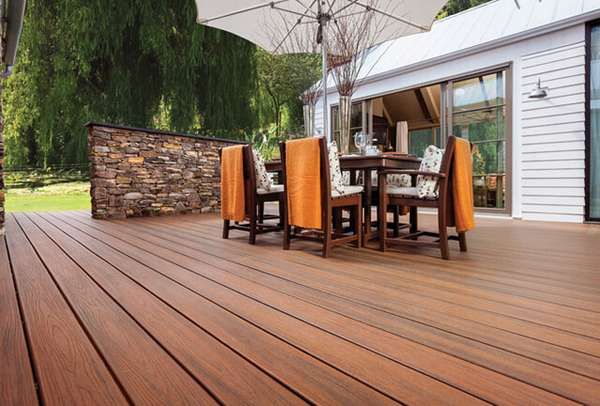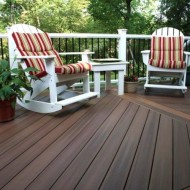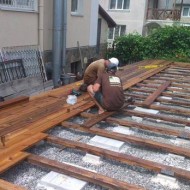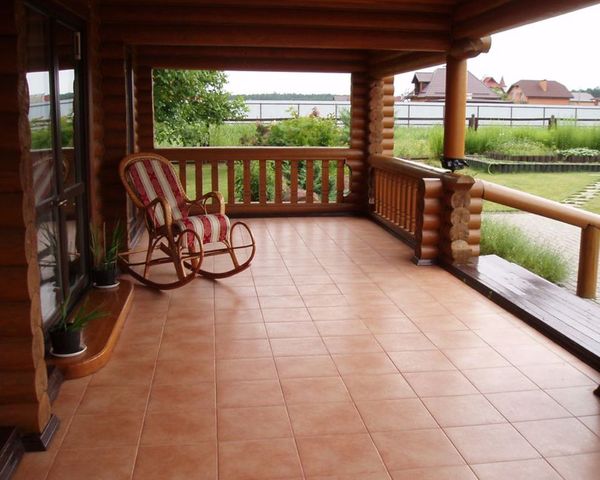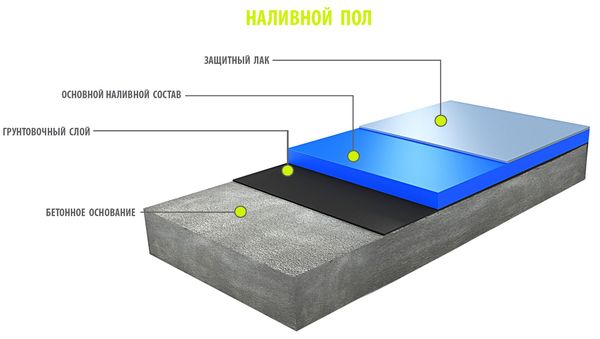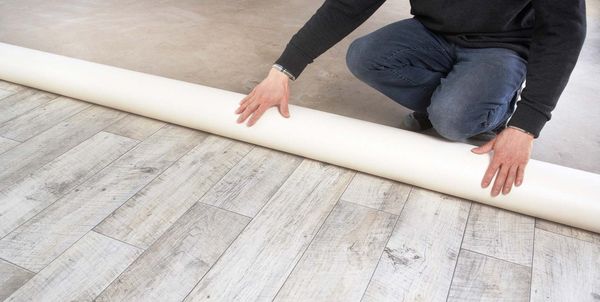My own master: we make the floor on the veranda according to the advice of experts
Content
Coating features
Open terraces are preferred mainly by sunbathers. But in conditions of poor weather protection, the owners of such structures have to use only moisture-resistant coatings. They withstand temperature changes well and retain their physical properties for 15 years. Indoors, this figure doubles.
When choosing materials, be sure to consider:
- Hydrophobicity, that is, the ability to repel moisture. Lightweight vinyl flooring, commercial linoleum and polymer tiles benefit here. They provide high-quality sound insulation inside the house, but due to their poor resistance to high temperatures, they are not suitable for outdoor use.
- Hygroscopicity, as a result of which products are subject to swelling and warping. With the timely processing of decking with protective compounds, its resistance to moisture will increase by 1.5 times. If this is not possible, it is better to make outdoor floors from wood-polymer materials.
- Porosity, on which the frost resistance of coatings depends. The leading positions here are occupied by clinker paving stones imitating natural stone, wood and leather. Open terraces are supposed to be sheathed with articles of abrasion class V.
- Thermal conductivity. In this case, it is more logical to choose an edged board. It retains heat well, and due to its resistance to decay, it is ideal for private construction. In open structures, deck planks last longer, which can withstand down to -40 ° C.
Refractoriness, coefficient of thermal expansion and, finally, acoustic properties of floor coverings remain equally important selection criteria.
Video "Laying the floor from edged boards"
In this video, you will learn how to lay your own edged board floor.
Types of materials
Plastic floors are especially popular. They are affordable for many. Their other advantages include good resistance to moisture, temperature extremes and mechanical stress. Household linoleum goes well with the warm floor system. And if a kitchen area is provided on the terrace, it is more logical to choose its commercial “brother”. This type of material is non-flammable and does not deteriorate under the influence of frequent rearrangements of furniture.
Beautiful flooring involves the use of products in different shades that perform specific functions both indoors and outdoors. For example, saturated red visually narrows the space, while yellow, on the contrary, expands its boundaries.
The device of a floor on the street is unthinkable without materials on a cement-gypsum base, with the help of which a perfectly even coating can really be made by hand in just a day. If this is not possible, use OSB-plates with a width of at least 2 cm. Inexpensive ceiling products, due to their low operational properties, are suitable only for completely closed structures.
Terrace board
The material is ideal for indoor and outdoor flooring.Its only drawback is its low fire resistance, due to which it is not recommended to buy decking for decorating premises with barbecue facilities. When in contact with the body, it provides a pleasant tactile sensation, which cannot be said about cold tiles and concrete. Due to the corrugated surface, the coating does not retain moisture and does not slip.
The deck board can be cut with an ordinary saw, but due to the increased hardness of the material, the work will take a lot of time. Better to use special carbide discs. These tools contribute to the convenient handling of wood and, as a result, quick installation. In the fight against its premature destruction, frost-resistant additives, polyurethane paints and fat-containing formulations will help. Penetrating deep into the pores, they compact the decking surface.
Tile
Ceramic products are more resistant to impact and stress than plastic floors. Unlike wood, they have not only hypoallergenic, but also antifungal properties. And their good resistance to abrasion and fading makes them suitable for outdoor flooring.
Sawing ceramic tiles requires certain skills. For beginners, it is better to use a glass cutter with a special lubricant that makes it easier to cut hard products. Before "cutting" them, it is important:
- draw a notch line with a pencil;
- draw the first strip from the far edge of the tile;
- break the material along the notch;
- file the edges of the product.
A smooth surface on a winter veranda can be covered with microporous tiles. For open terraces, satin-type porcelain stoneware is more suitable.
Self-leveling floor
The main advantage of the coating is good adhesion to any substrate. It can be wooden board, natural stone, linoleum or concrete. The absence of seams and joints simplifies installation, and the resistance to high temperatures contributes to quality work even in the open air.
Among the shortcomings, it is worth noting the simple design and the need for a perfectly flat substrate. Weather resistant polyurethane coatings are the best option for outdoor decks. They can withstand temperature extremes well, but absolutely cannot be repaired. Therefore, if the budget allows, it is better to buy polyurethane-cement coatings with anti-slip impregnation for a summer residence.
Rubber
Modern rubber coatings are 96% natural fillers. They do not contain formaldehyde hazardous to health, making them ideal for indoor and outdoor installation. Their other advantages include strength, hypoallergenicity and good elasticity. When ignited, the material does not emit toxic substances that cause burns in the respiratory tract.
Proper care of the rubber coating is a guarantee of its long-term use on the playground and in the gym. Inside the house, dust can be collected with a vacuum cleaner. Wet cleaning with soft brushes is allowed only once every 3 months. On the street, such a floor must not be exposed to acids and alkalis. To clean surfaces, you need purified water without rust.
Linoleum
The material impresses with a variety of textures and colors. The anti-slip coating is suitable for dance halls, guest rooms and semi-enclosed annexes. Due to their low thermal conductivity, such coatings do not cool the heat, and their high hydrophobicity increases their resistance to moisture in completely open structures.
Old linoleum can be painted with acrylics. Unlike oil and alkyd paints, they do not smell and are highly resistant to ultraviolet light. In order for the updated material to serve as long as possible, before repairing you need:
- remove the lint;
- wash the floor with water;
- seal cracks with putty;
- polish linoleum.
DIY flooring
Polymer-based roll products are often laid on a concrete base.Before that, it is leveled with a screed, and if the bumps are insignificant, use a grinder. Linoleum can also be laid on a wooden surface. Only for this you need well-dried lumber with maximum resistance to moisture and insects.
Apply the adhesive in small portions, smoothing the coating with a heavy roller. After a few days, the seams should be repaired and the skirting boards should be filled.
If the pattern is blurred, plain canvases are laid in one direction. You can use double-sided tape instead of glue.

